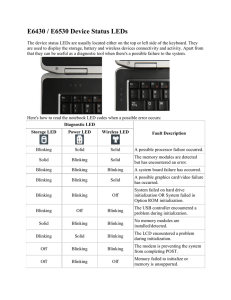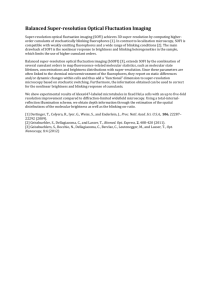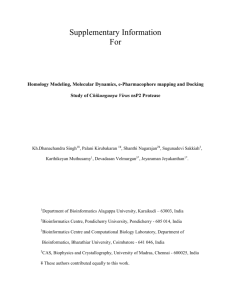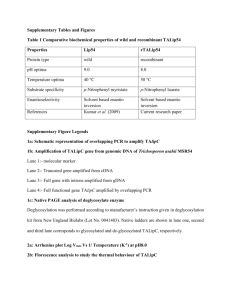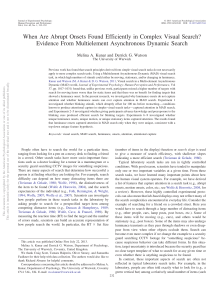Supplementary Information Defect
advertisement
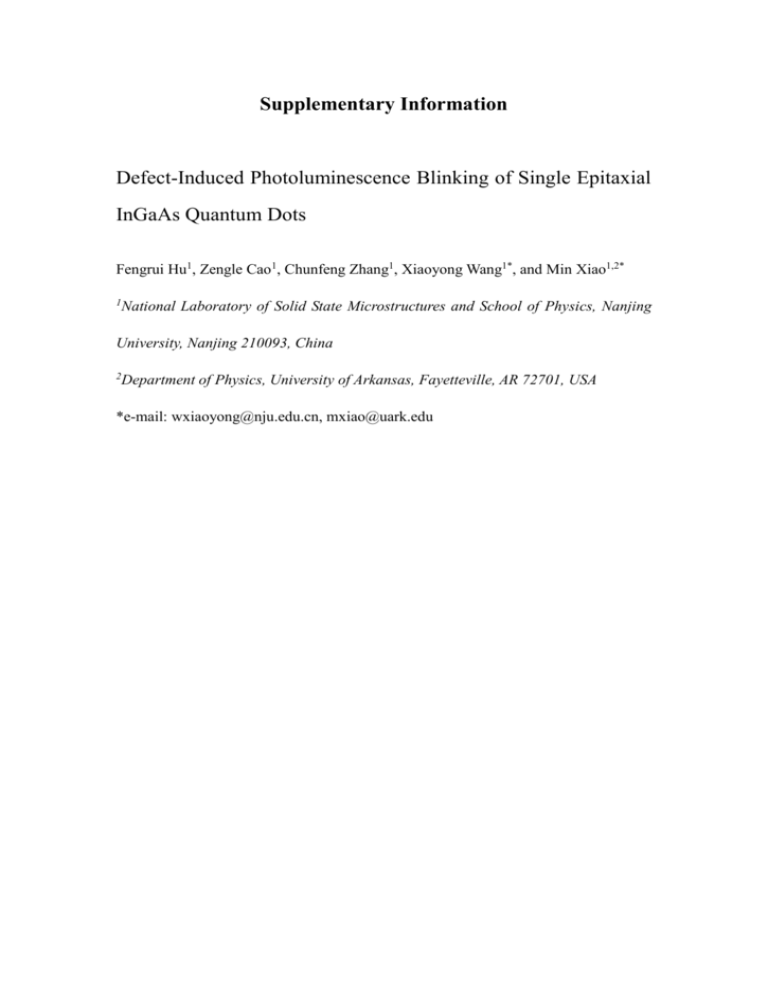
Supplementary Information Defect-Induced Photoluminescence Blinking of Single Epitaxial InGaAs Quantum Dots Fengrui Hu1, Zengle Cao1, Chunfeng Zhang1, Xiaoyong Wang1*, and Min Xiao1,2* 1 National Laboratory of Solid State Microstructures and School of Physics, Nanjing University, Nanjing 210093, China 2 Department of Physics, University of Arkansas, Fayetteville, AR 72701, USA *e-mail: wxiaoyong@nju.edu.cn, mxiao@uark.edu Supplementary Figure S1. PL intensity versus time traces of four single InGaAs QDs. The four curves shown in (a), (b), (c) and (d) were measured for the QDs whose other PL blinking properties are shown in Fig. 2, Fig. 3, Fig. S2 and Fig. S3, respectively. The red (blue) line in each figure marks the intensity threshold above (below) which the data points are classified into the PL blinking “on” (“off”) periods. Supplementary Figure S2. The first type of PL blinking behavior measured for a single InGaAs QD whose PL blinking versus time trace is shown in Fig. S1(c). (a) FLID image with a vertical alignment of the lifetime-intensity data points. The PL intensity and average lifetime are calculated for a binning time of 50 ms. (b) Transient PL curves measured for the blinking “on” and “off” periods. (c) Similar transient PL curves to those shown in (b) but plotted within a shorter time window. (d) Probability densities of the blinking “on” and “off” times. Supplementary Figure S3. The second type of PL blinking behavior measured for a single InGaAs QD whose PL blinking versus time trace is shown in Fig. S1(d). (a) FLID image with a positively-sloped alignment of the lifetime-intensity data points. The PL intensity and average lifetime are calculated for a binning time of 50 ms. (b) Transient PL curves measured for the blinking “on” and “off” periods. (c) Similar transient PL curves to those shown in (b) but plotted within a shorter time window. (d) Probability densities of the blinking “on” and “off” times. Supplementary Figure S4. PL intensity versus time trace of a representative blinking QD excited with increasing laser power densities. Supplementary Figure S5. PL intensity versus time traces of a single InGaAs QD excited at the power densities of (a) 25 W/cm2 and (b) 50 W/cm2, respectively.

